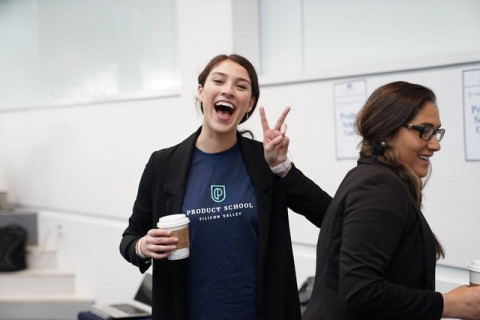
11 min
0
10.12.2022

Learning is the ability or process to obtain knowledge, skills, understanding, values, and many more. Some may think that learning can only be happening in school, but it's more than teaching and memorization in reality.
It's also how the students interpret and use what they learned. Experiences are also part of learning which sometimes lead to change. Learning is vital to us. Like food to our body, knowledge is essential to nourish our minds. There are different methods in learning, and one example is the Feynman technique by Richard Feynman.
Everyone can use this technique - from high school students to master's degree holders. Anyone can take advantage of the Feynman technique as an excellent way to get better grades. But who is the man behind one of the best learning methods out there?
The Basics of the Feynman Technique
Knowledge and information are truly absorbed when you are able to explain or use them in different situations. Learning about something is like having a tool that you can use in your life, whenever and wherever you are.
Feynman always took down notes when recording and collecting data when he was a student. According to James Gleick's biography of Feynman, instead of preparing for his examination as a graduate student, he went to the Massachusetts Institute of Technology (MIT), and he made the "Notebook Of Things I Don't Know About."
It's a notebook where Feynman organized, compared, and connected everything that he knows and doesn't. It's a simple method to learn other things, be excited about new concepts, level up your knowledge, and keep ideas you don't want to forget. For him, it's better to teach what you know than what the book says.
Feynman's technique is also used by people who are not good at just copying and memorizing a book's definition. For these individuals, rewording or explaining what they've learned in their own words proved to be easier to understand.
This method requires four steps to follow.
- Write your concept.
- Pretend to teach someone else.
- Identify knowledge gaps in your explanations.
- Organize, simplify, and tell a story.
Although reading, writing, listening, and memorizing are what most do in school to learn, it's a fact that most concepts learned through these are often quickly forgotten. That's why Richard Feynman came up with the technique to learn quickly and more efficiently.
Simplify Your Learning with the Feynman Technique
Feynman's method is a simple technique that involves explaining complex concepts or subjects. Unfortunately, not everyone can explain things they want to others the way they want and understand them.
That's why it's essential to use a simple explanation that anyone can easily acknowledge. But how can a complex concept be broken down into such? The following are the steps on how to do it:
Write Your Concept
Start organizing your thoughts by getting a sheet of paper. You can also use your notebook and scribble your concept. Write down all the information, ideas, and everything you knew about the topic, and every time there's new information, add it to your list.
Doing this will help you see the concept as a whole, and you'll be able to group those that connect to each other and separate parts that need further explanation.
This learning technique can also be used in topics aside from Math and Science. There is also no correct or wrong way of how you'll jot down your thoughts.
For example, if you want to learn how about Semantics, or the logic behind the meanings of words, then begin with what you know about it. Your paper may look like this:
Subject: Semantics
What is semantics?
- A branch of linguistics
- What makes the meaning of words logical
- Has different subtypes: formal, lexical, and conceptual
What is formal semantics? (Logical meaning)
- Sense
- Implication
- Form
- Reference
What is lexical semantics?
- Meanings
- Relations
What is conceptual semantics?
- Structure
From there, you can define more of what you know and slowly fill in what you can. Feel free to leave parts that you're unsure of. As you can see, your scribble doesn't need to be too organized or constructed. Write according to how you usually do, as long as you can understand it.
Pretend to Teach Someone Else
After writing down your topic and everything you know, pretend that you are teaching someone else. For example, a child. Assume that you're teaching a child who doesn't know many words and only understands simple terms.
A common reason for the difficulty in teaching is the use of ornate words. If you can't explain a concept in simple words, then you don't fully understand what you are talking about. In return, your listeners will have a hard time grasping what you're saying.
Incorporate using one or two examples in your teaching as well so you're sure that you properly apply the concept to appropriate situations.
Following the sample from above, your note can look like this:
Subject: Semantics
What is semantics?
- A branch of linguistics - Linguistics is the study of language that is concerned with everything language-related.
- What makes the meaning of words logical
- Has different subtypes: formal, lexical, and conceptual
What is formal semantics? (Logical meaning)
- Sense - Using the word correctly, in its exact meaning
- Implication - What a word may "imply" or "suggest"
- Form - How the word looks
- Reference - A word's relationship with other words
Identify Knowledge Gaps in Your Explanations
Review what you've written. Look at your paper and see what's missing, what you're forgetting, or if your explanation is unclear. Do this, especially if you feel like your explanation is shaky or lacking, or if in the middle of you trying to explain it to yourself, you suddenly have a question that you can't answer.
Once you have the gaps, go back to your source materials and look for the information you need to fill the blanks. And then simplify them. It's alright not to fill in every gap as it's a way of understanding your Circle of Competence.
What's Circle of Competence? The Circle of Competence by Warren Buffett talks about recognizing what you know and what you don't. It's being conscious of the boundaries of your knowledge. Through understanding your circle of competence, you can avoid problems and realize opportunities.
Once you feel confident with your note, you can make a story out of it.
Organize, Simplify, and Tell a Story
Feynman's technique is all about learning by simplifying explanations and clarifying our understanding using simple analogies. In this part, you will organize all the notes and simplify them to make a narrative or a story. Read it and listen to yourself - if you find your explanation complicated or confusing, go back to the previous steps and try again. Always remember to use simple words to make the most straightforward explanation that anyone, even a child, can understand.
An optional step to help you know if you fully understand the topic is as follows: Grab one of your friends or someone who also knows the concept and present your topic to them simulating a lecture.
And then ask them for feedback or suggestions, or you can tell them beforehand that they can ask questions while you're presenting. If you will be able to answer their questions with clear explanations and then receive positive feedback, that means you did great on your topic and fully understand it, and if you didn't, try again until you succeed on your goal.
How Does the Feynman Technique Work?
There are times that people come to realize that they don't understand one topic until it's too late. Maybe during a presentation, or when someone asks you about it, or maybe during exams. Suddenly, your mind becomes blank, and you will not be able to answer specific questions or give the correct explanations, even if you know you've read and memorized them before.
Feynman Technique prevents people from pretending to know everything about a particular topic. Using the four steps given above helps us identify what we don't know, add what we should learn, and simplify our understanding of it.
What Is Considered "Learning"?
The Feynman Technique does not only help you enrich your knowledge but also gives way to different perspectives of learning. Picking apart your thoughts and laying out what you think you know. Subsequently, refining them with new information gives way to a new understanding.
Being able to understand correctly will help you explain and impart your knowledge to others.
Interesting Facts About Richard Feynman
Here is a brief biography, facts, and some contributions of the great explainer Richard Feynman.
- He was born on May 11, 1918, in New York, US, and Died on February 15, 1988, in Los Angeles, California.
- He won the New York University Math Championship in his last year of high school.
- At the age of 24, Feynman joined the Manhattan Project as a theoretical group leader.
- He was a Nobel prize winner physicist in 1965.
- Physicist Richard Feynman made notable contributions in quantum mechanics and particle physics.
- He developed the field of quantum electrodynamics.
- The legendary Albert Einstein attended Feynman's first talk as a graduate student.
- Bill Gates called him "The greatest teacher I never had," inspired by his teaching method.
- The simple way of learning emphasized in the Feynman Learning technique was inspired by Feynman's own study methods when he was in Princeton.
Feynman also published a book in 1963 titled: "The Meaning of It All: Thoughts of a Citizen Scientist," where he talks about his day's religious, political, and social issues. He shows how he evaluates information, which is also a tool that you can use with the Feynman technique to clarify your learning. In this book, he created a series of "tricks of the trade" he called "This Unscientific Age," where he took what he learned in pure science and applied it to topics people have to deal with every day.
Some are as follows:
- Deciding if a person knows what they are talking about or just pretending.
- Using reliable sources and employing them to get as close to the fact as you can.
- Continuing evaluating what you know.
- Providing the right questions.
- Being unable to conclude the possibility of things happening once they already happened.
- Preferring useful statistics over having a series of a narrative because it's no data, but you don't have to be scientifically accurate.
In Conclusion
A mental model describes someone's idea about how something works in real life, and Feynman illustrates that learning is a lifelong activity. This method is designed to help you study, learn new things and subjects quickly, and start actually learning with just a piece of paper.
There is a quote that was not correctly sourced, but people claimed that Albert Einstein said:
"If you can't explain it simply, you don't understand it well enough."
This quote seemed to be related to what Richard Feynman said:
"I couldn't reduce it to the freshman level. That means we don't understand it."
Feynman understood the contrast between understanding the concept or topic and just knowing the name of something. Knowing what it is called is different from knowing what it is about. You will not be able to explain it if you only know its name and not its essence or reason for existing.
People use the Feynman technique utilizing simple language and simple explanations to understand complex concepts fully. The steps are to choose your concept, pretend that you are a teacher, fill in the gaps, summarize and simplify your explanations.
Incorporate your reading and memorizing in your learning process so you will not forget these topics when they come in handy. Learning is a continuous process that everyone should subject themselves to, and it does not end when you reach the last page of any book. We can learn from our school, home, books, social media, and especially from our experiences. Evolve and grow and strive for your goal.



